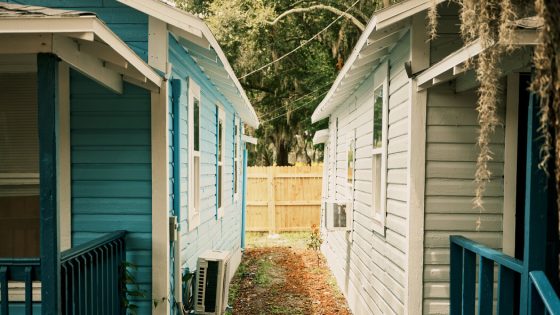Holly Meyer Lucas estimates that as many as 30 of the 100 houses her real estate team sold in and around Jupiter, Fla., last year were put on the market because their owners could no longer keep up with skyrocketing home insurance.
“It is the housing crisis that nobody is talking about,” Ms. Meyer Lucas said. The houses sold easily, but often to well-off cash buyers who could drop the insurance altogether because they did not have a mortgage that required them to carry it.
Jumping insurance rates are acute in coastal Florida, with its exposure to big risks like hurricanes and coastal erosion, but they are also a nationwide phenomenon. Last year, premium rates for owner-occupied housing were up 11.3 percent on average nationally, based on data from S&P Global Market Intelligence.
Insurance rates have been climbing for a number of reasons: Storms have become more frequent and severe, inflation and labor shortages have driven up the cost of repairs and home values have increased, requiring larger policies. The biggest jumps occurred in Texas, Arizona and Utah, which were among 25 states in total that posted double-digit surges last year. In some places, including Florida, rates are up more than 40 percent over the past five years.
That can add up to a major additional annual expense for owners: The typical single-family homeowner with a mortgage backed by Freddie Mac was paying $1,522 in 2023, up from $1,081 in 2018. And that’s simply an average. Anecdotally, many people report seeing their premiums jump by thousands of dollars.
Those higher insurance rates are bringing pain to many homeowners, forcing people out of their homes and communities while leaving others taking big risks as they drop insurance altogether. But the rising costs are not meaningfully boosting the nation’s official inflation data, which could help to explain a small part of the disconnect between how people feel about the economy and how it looks on paper. Economic confidence remains depressed and consumers continue to fret about high price levels, dogging the Biden administration, even though inflation has been cooling and the job market is strong.
The Consumer Price Index, which is the first of the two major inflation indexes released each month, uses only renter’s insurance when it calculates housing insurance costs. Structure insurance is excluded. That’s because government economists treat homes partly as financial investments, and count much of the spending related to them as further investment rather than consumption.
The Personal Consumption Expenditures index, which is the Federal Reserve’s preferred inflation gauge, does measure property insurance but gives it only a tiny weight in the basket of goods and services that people consume. That’s because when calculating the weight, the government takes how much homeowners spend on insurance and subtracts out how much insurance companies are expected to spend on claims. The upshot: What feels like a big expense to most people adds up to a tiny one for inflation accounting purposes.
While there’s a logic behind the way the measurement is done, the result is that official inflation figures either ignore or are barely budged by today’s big home insurance cost increases — even though they are noticeable, even painful, for many households.
Insurance is an example of a larger reality. Overall inflation has come down notably, but consumers are still struggling with uncertainty about key prices that make up an important part of their day-to-day lives. Housing costs are up. Emergency repairs of all kinds are expensive. And it may be tough for many to feel confident about the financial outlook when they remain worried about getting walloped with big and hard-to-avoid expenses like climbing annual premiums.
“It definitely matters for psychology — 100 percent,” Omair Sharif, founder of the research firm Inflation Insights, said of home insurance in particular. “But it amounts to having very little impact on the aggregate inflation data. It’s not really going to move the needle.”
Insurance rate increases could continue nationally in 2024, because insurers are still scrambling to break even. Claim payouts have been mounting, in part as disasters become more frequent amid climate change. Insurers’ losses from natural disasters topped $100 billion for the fourth straight year in 2023.
That has been not only about big and costly hurricanes, but also about smaller storms hitting the Rocky Mountains, the Great Plains and even the Midwest.
“Individually, these storms are not costly, but collectively they can really start to add up,” said Tim Zawacki, lead analyst for the insurance industry at S&P Global Market Intelligence.
“I don’t think you can say for sure that rates have finished going up,” Mr. Zawacki said.
Heather Kruayai, a Redfin agent in Jacksonville, Fla., was shocked to see her own home insurance cost jump in December to $5,000 from $2,000. She shopped around and got a policy with an annual premium of $2,500, but she said she was lucky. Ms. Kruayai said she had known people who had to sell their houses because of sharp insurance cost increases, and had one client who moved in just a year ago and was now contemplating whether she needed to sell her home because insurance and taxes had increased so much.
“Colleagues, friends — they’re all seeing the same thing,” Ms. Kruayai said. When buyers move into the area and realize how much of an annual expense insurance will be, she added, “they get a little bit of sticker shock.”
Florida is, in some ways, an extreme case. It has allowed third parties like roofers to seek insurance payouts on houses, a legal quirk that spawned frequent liability claims. Between that and losses from storms and other disasters, insurance companies faced big losses and began to pull out of Florida entirely. State legislators recently tweaked the law to ease the strain and try to lure insurers back.
But bad hurricane seasons remain a risk. The state has also seen a recent jump in population as baby boomers move south to retire and as remote workers relocate, putting more people directly into storm paths, said Latisha Nixon-Jones, a Jacksonville University professor who specializes in disaster law.
“It’s become too costly and unpredictable to measure the risk,” she said.
High insurance costs and big condominium assessments are combining with high home prices and high interest rates to make homeownership unaffordable for many people in Florida, a reality that Raphael Bostic, president of the Federal Reserve Bank of Atlanta, nodded to in a recent interview with reporters. Mr. Bostic’s Fed district includes the state.
“For regular people, they are very concerned,” Mr. Bostic said, calling the housing market in Florida “very challenging.”
There is some hope that things could stabilize, at least in the sunshine state. Billy Wagner, agency owner of Brightway Insurance in Ponte Vedra Beach, which is just outside Jacksonville, said that companies were slowly returning to the market. He expects premiums to begin to level off as that happens.
“People ask me how it’s going now, and I say, ‘Well, we’re still in hell, but it’s not as hot,’” he said.
But for many homeowners both in Florida and nationwide, the reality that annual insurance premiums can jump by huge amounts — suddenly costing hundreds to thousands more per year — is a financial risk and reality that they now have to factor into their budgets.
Dennis Dawson, 60, lives with his husband in Mount Dora, a town in Central Florida. The couple is well off, making about $300,000 per year, but in just a few years they watched their home insurance bill climb to $4,200 from $1,200. Then they were dropped altogether — their house was built in the 1940s, and it was deemed too old to insure.
Mr. Dawson managed to get onto the state-run insurance plan, but the deductibles are so high that they could be exposed to major losses if a storm were to harm their property. He and his husband are now renovating, adding weather protective measures and a new roof in hopes of improving how they fare with insurance providers.
The possibility of more increases looms large to Mr. Dawson as he thinks about a future when the couple might be on a fixed income — and less able to stomach big premium jumps.
“We’re on the verge of retirement,” he said. “It doesn’t seem like there’s any respite.”
Source Agencies


